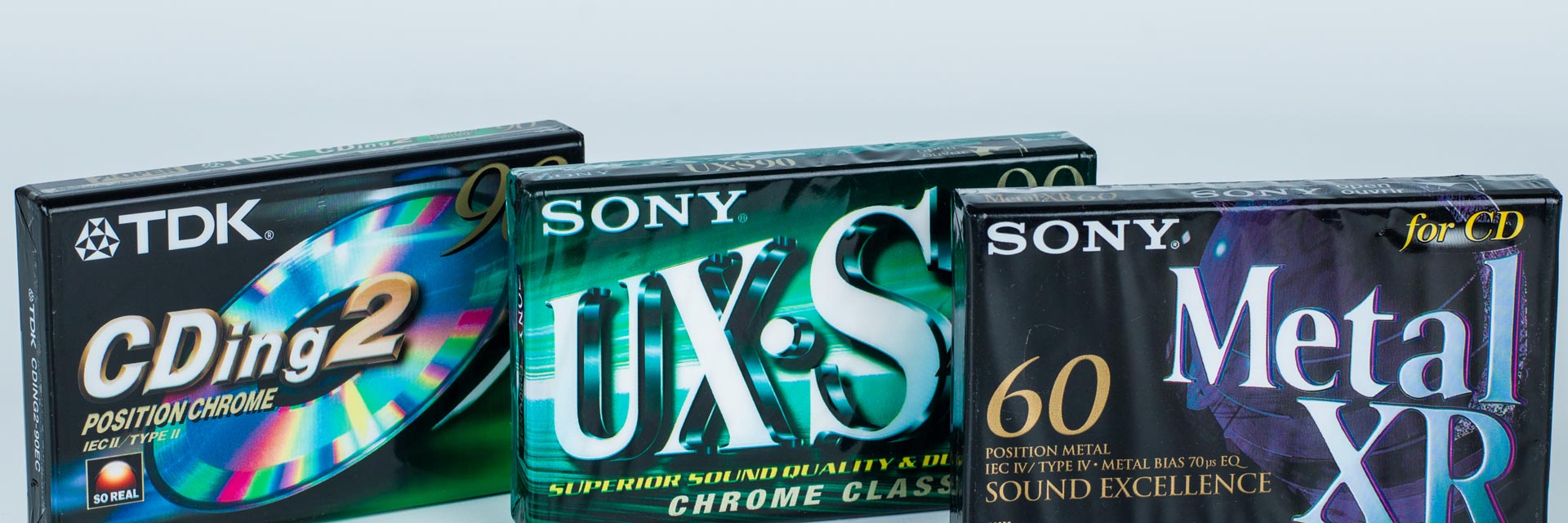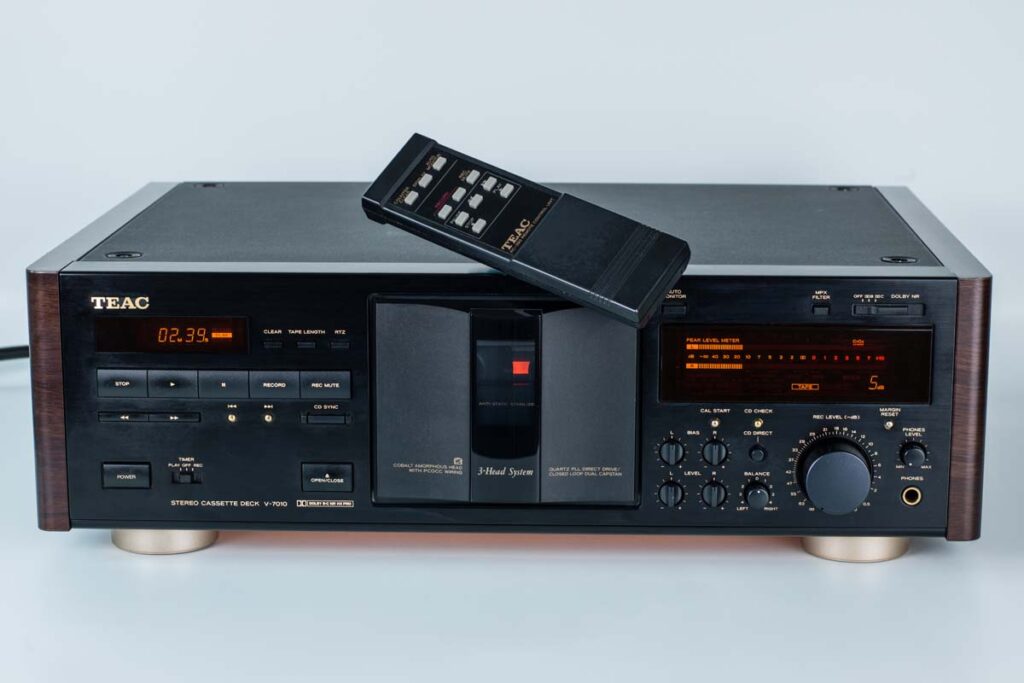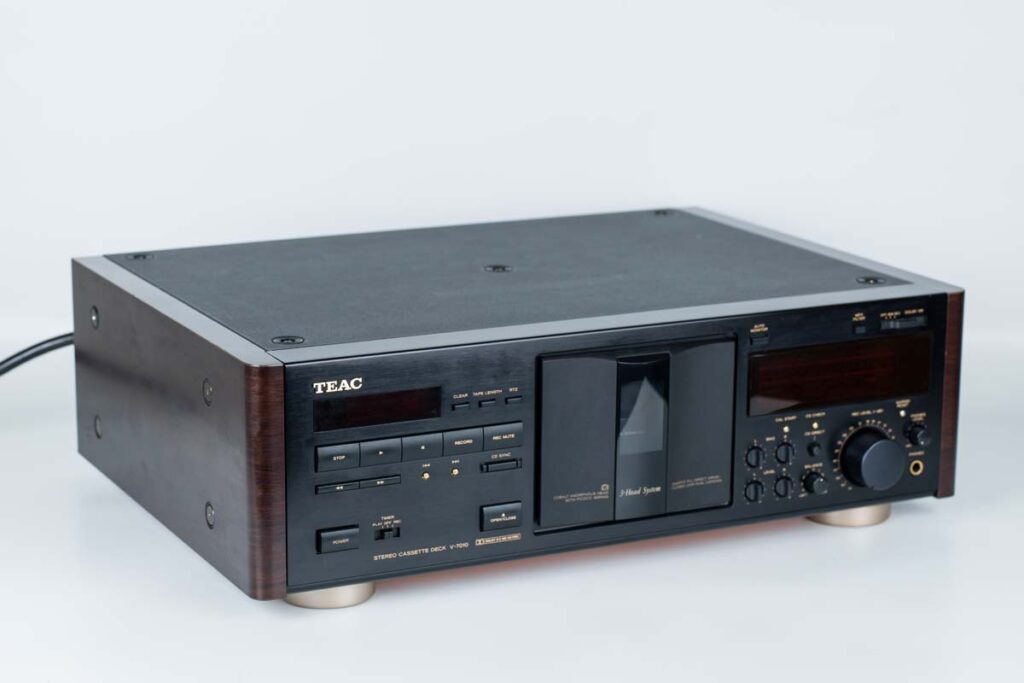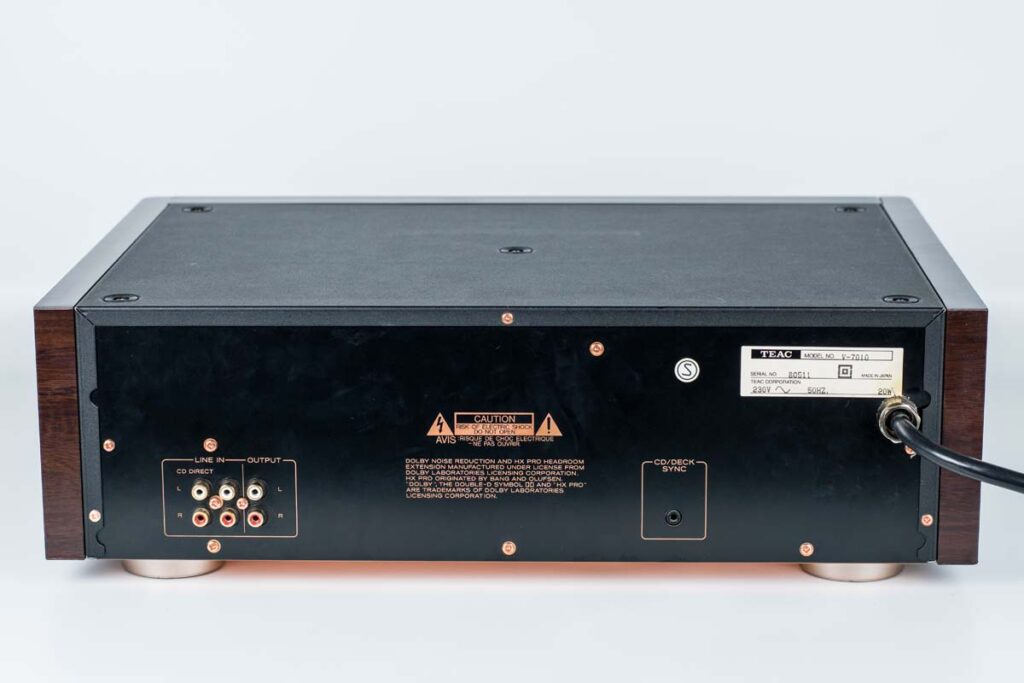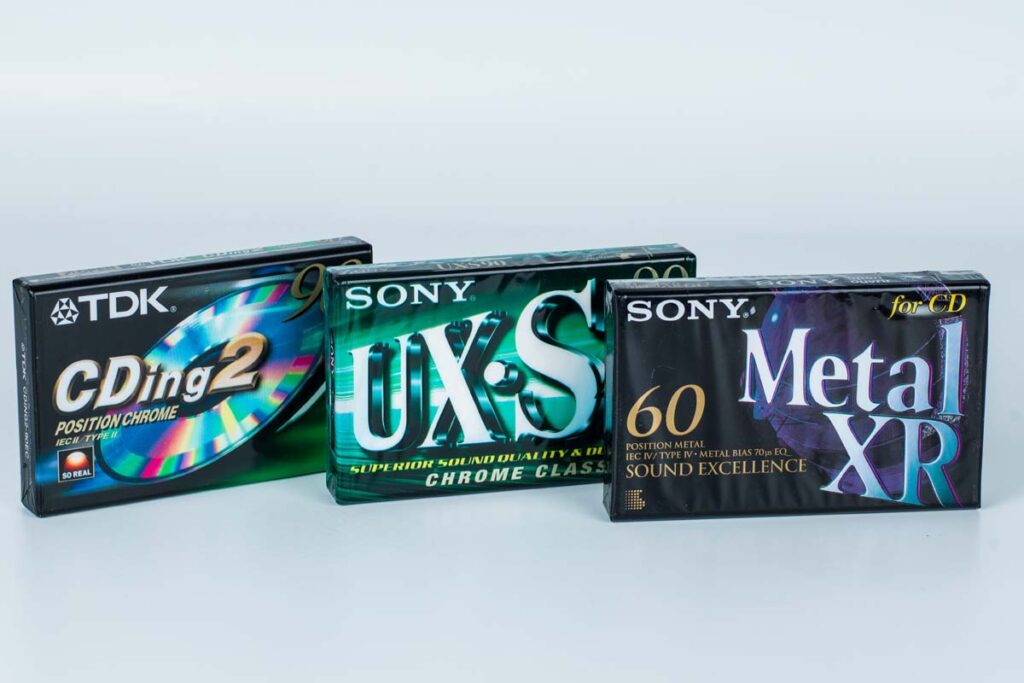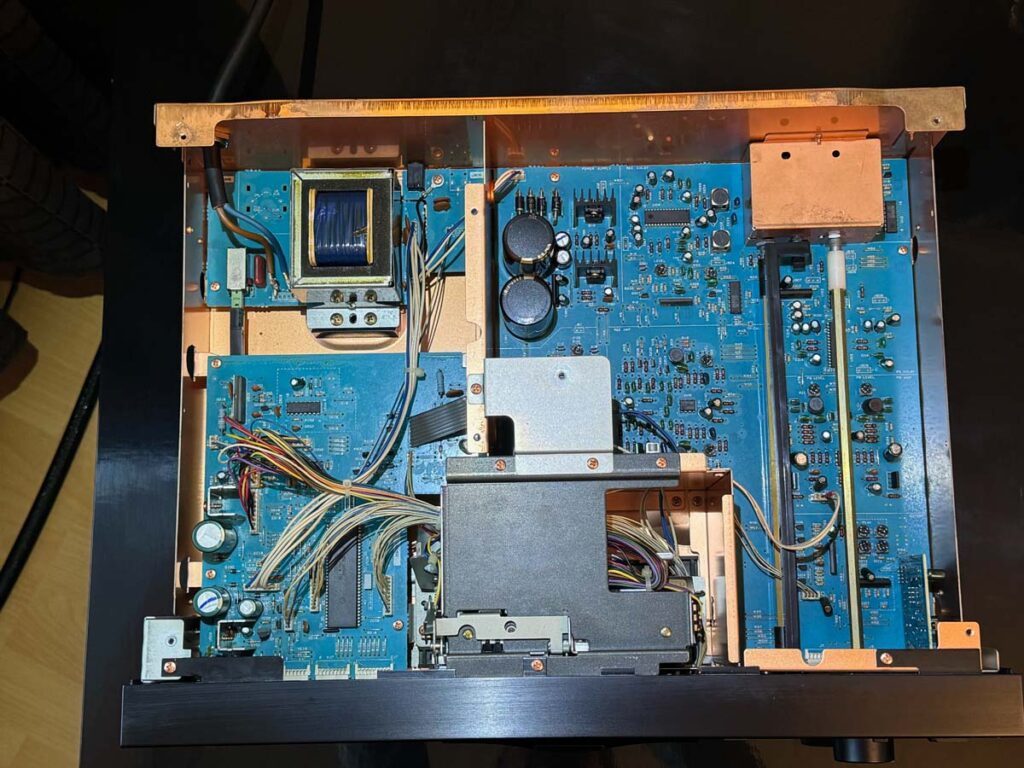As a die-hard analog enthusiast with a penchant for retro technology, I simply couldn’t resist when I discovered a TEAC V-7010 cassette deck in a small, unassuming hi-fi store.
The seller had just got the TEAC V-7010 in from an estate, and the price was more than fair – considering the almost immaculate condition of the device. This gem from the early 90s not only impressed me with its robust metal housing and stylish wooden side panels, but also with its incredible promises in terms of sound quality. Here’s a candid, unfiltered and light-hearted account of my initial experiences.
First Impression and Workmanship
As soon as I laid eyes on the tape deck, I felt like an archaeologist discovering a long-lost treasure. The device is solidly built and exudes a noblesse that is hard to find these days. Button presses are rewarded with satisfying feedback and the digital VU meters glow in the dark like the eyes of a mischievous cat. Particularly noteworthy are the stylish wooden side panels, which give the deck a touch of elegance and vintage charm. In short, the TEAC V-7010 is a real eye-catcher and a delight for any lover of classic audio technology.
Sound Quality: A Match for CDs with Metal Cassettes
But now to the meat of things: the sound. The TEAC V-7010 is already very good with normal ferrite or chrome cassettes, but it’s only with metal cassettes – which are unfortunately quite costly on the used market – that the true magic unfolds. For my recordings I used the Sony Metal XR, Sony UX S and BASF CS 2 cassette types. Yes, it’s true – this cassette deck can actually match CD sound quality. The treble is clear and precise, the mids present and the bass meaty and powerful. It’s as if you’ve given your old cassettes a second wind. The music sounds lively, dynamic and amazingly detailed. Sometimes you really have to pinch yourself to believe that what you’re hearing is actually coming from a cassette.
The Inevitable Background Noise
But for all the euphoria, I have to be real: a slight background noise cannot be completely avoided. Even with the best cassettes and meticulous calibration, a hint of analog charm remains – or to call a spade a spade: a slight, constant hiss. But hey, who needs absolute silence? After all, this is a cassette deck and not some digital miracle cure. A little hiss is simply part of the experience that reminds you that you’re dealing with real, tangible technology.
Dolby: An Ambivalent Chapter
And then there’s Dolby. That famous noise reduction system that promises to send any and all background noise packing. However, my experience with it has been mixed. When recording with Dolby, the dynamics seemed to suffer somewhat, and when playing it back, it was a gamble. Sometimes it sounded great, other times the music seemed strangely muffled and lifeless. Maybe it’s my particular deck, maybe it’s the cassettes – either way, I decided to ignore Dolby and just accept the hiss as part of the nostalgic charm.
Recording: The magic of metal
The recording quality delivered by the TEAC V-7010 is impressive, especially with metal tapes. A particular highlight when recording is the deck’s ability to cope with slight clipping. You can bump the level up by three or four decibels without it sounding overdriven. This gives the recording excellent dynamics and presence. The music sounds lively and powerful, which makes a considerable difference, especially with dynamic pieces and complex arrangements. This ability to push the limits of the tape material demonstrates the high quality and precision of the TEAC V-7010.
For my tests, I recorded music from vinyl, including classics such as Pink Floyd’s Animals and Fleetwood Mac’s Rumours. The results were simply stunning. With Pink Floyd’s ‘Dogs’ in particular, I was struck by how the guitar sounds came through crystal clear and razor sharp – every touch felt almost tangible. David Gilmour’s vocals were incredibly present, as if he was standing right in front of you, and the subtle echo effects used in many of their tracks came through in all their glory. Fleetwood Mac’s “The Chain” impressed with its powerful bass, which the deck reproduced with impressive depth and clarity. The iconic bass line in the second half of the song in particular came out with such power and precision that I almost forgot I was playing a cassette. Christine McVies and Stevie Nicks’ harmony vocals on “Dreams” were so detailed and nuanced that it felt like they were right there in the room.
The Technical low-down of the TEAC V-7010
But let’s get serious now, for the tech nerds among us: The TEAC V-7010 is a three-head deck, which means that it has separate heads for Recording, playback and deleting. This enables precise and simultaneous monitoring of the recording quality. The tape speed is wonderfully stable, and the dual-capstan system ensures that the tape is always kept at optimal tension. Another highlight are the digital VU meters, which display the levels precisely and clearly. The bias fine tuning and the extensive calibration options make it easy to adjust the deck optimally to each cassette. There are also practical functions such as timer recording and playback as well as an electronic tape counter that is much more precise than the old-fashioned mechanical ones.
Conclusion: A love letter to analog
All in all, the TEAC V-7010 not only met my expectations, it far exceeded them. It may not be perfect, but it has character. It’s a piece of audio history that you can hear and touch. Yes, there is slight background hiss, and Dolby is not always my friend, but these little imperfections make the experience all the more authentic. If you’re an analog nerd and have the opportunity to get your hands on a TEAC V-7010, don’t hesitate. Give the old technology some space in your collection – the medium always has a charm all of its own that simply cannot be replaced by digital alternatives. And don’t forget to get hold of a few metal cassettes on the second-hand market – your audiophile palate will thank you!

